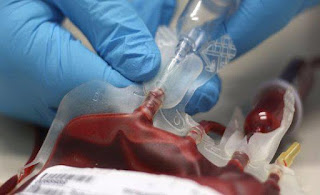Plant-based Biologics Development: Pioneering New Frontiers in Healthcare
Introduction
Biologics have revolutionized the treatment of various diseases like cancer, diabetes and many autoimmune disorders. Traditionally, biologics are complex molecules produced from mammalian cell cultures through expensive and resource-intensive processes. However, the future of biologics lies in using plant systems for production which offers significant advantages over the conventional methods.
Plants as Bioreactors
Plants provide an incredible platform for the cost-effective, safe and scalable production of therapeutic proteins known as plant-based biologics.
Some key features that make plants attractive for biologics manufacturing include:
- Simple and inexpensive cultivation methods as plants can be grown on large scale using standard agricultural techniques.
- Ability to perform complex post-translational modifications required for the proper functioning of many proteins. This allows production of biologics with human-like glycans and other modifications.
- Free from risk of contaminating human pathogens during cultivation since plants lack infectious agents pathogenic to humans.
- Elimination of costly, complex infrastructure needed for cell-culture facilities.
- Potential for oral delivery of plant-based biologics thereby improving patient convenience and compliance.
Pioneering Plant-based Biologics
Some of the pioneering achievements in plant-based biologics include the following:
- ZMapp (2014) - The first therapeutic mAb cocktail produced in plants and tested on Ebola patients during the 2014 West African epidemic. No serious adverse effects were seen.
- Elelyso (2012) - Plant cell-expressed recombinant glucocerebrosidase enzyme approved for Gaucher’s disease. First plant-made therapeutic protein approved.
- Plant-made influenza vaccine (2016) - Tobacco plants produced hemagglutinin protein for influenza. Clinical trials showed good safety profile and immunogenicity.
- Phycoerythrin (Cyanobacteria, 2015) - A phycobiliprotein used as fluorescent tag produced in engineered cyanobacteria. Approved for research use.
Subheading: Economic Advantages
The low-cost, large-scale production potential provides significant economic advantages compared to traditional mammalian cell culture systems. Some of the major advantages include:
- Greater affordability of plant-based biologics for patients in developing countries where treatment costs are a major barrier.
- Lower manufacturing costs - Estimated 50-60% lower production and downstream processing costs compared to other systems.
- Faster scale-up - Plants allow unprecedented scale-up within a single growing season to meet surging demands.
- On-demand, distributed manufacturing - Quick deployment of modular, indoor farms even in remote locations closer to patients.
- Sustainable technology - More environment-friendly alternative with less fossil-fuel dependency compared to energy-intensive mammalian cultures.
Subheading: Challenges and Future Roadmap
While plant-based technology holds immense promise, some technical and regulatory challenges still need to be addressed:
- Ensuring proper human-like glycosylation of plant-derived proteins critical for activity and safety. Advances in metabolic engineering tackling this.
- Low baseline expression levels in plants compared to other expression systems. New strategies like MagnICON vectors boosting yields.
- Detailed characterization of plant-specific modifications on proteins and assessment of any immunogenic potential.
- Data gaps in large-animal safety/toxicity studies. Long-term safety profile needs monitoring.
- Regulatory acceptance and pathway for plant-made biologics approval yet to be established by major agencies.
Going forward, further refinements to production platforms, newer plant host systems and clinical validation of more plant-derived products will drive regulatory acceptance and commercialization. With coordinated efforts across industry and academia, plant-based biologics can emerge as a game-changing technology to solve global healthcare challenges.




Comments
Post a Comment